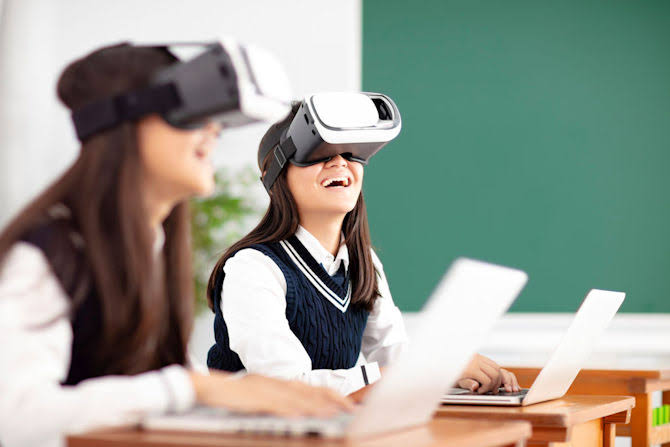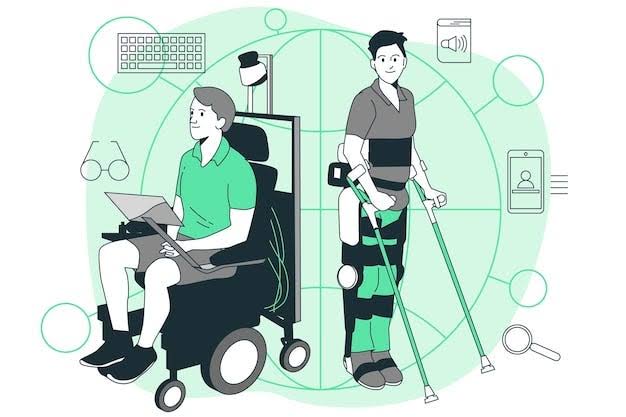Introduction to Virtual Reality in Education
Virtual Reality (VR) has grown from being a futuristic concept to a transformative technology actively reshaping industries, and education is at the forefront of this revolution. In 2025, VR is no longer a novelty confined to gaming or entertainment. Instead, it is evolving into a powerful instructional tool, offering immersive and experiential learning environments that traditional methods cannot match.
This transformation is largely driven by the rapid advancement of VR hardware and software, increased affordability, and the growing demand for flexible and interactive learning methods. As educational institutions, from primary schools to universities, begin to embrace the potential of VR, it becomes crucial to examine how it will influence the future of education globally.
How VR Enhances the Learning Experience
One of the most significant advantages of VR in education is its ability to create fully immersive experiences that engage multiple senses. Rather than reading about ancient Rome or the human circulatory system, students can virtually walk through a Roman marketplace or navigate through arteries and veins in 3D. This depth of engagement leads to improved knowledge retention and deeper understanding of complex subjects.
Moreover, VR caters to different learning styles. Visual learners benefit from the 3D models, auditory learners from guided narratives, and kinesthetic learners from interacting with virtual objects. This inclusivity makes VR a versatile tool for diverse classrooms.
In 2025, many platforms now offer tailor-made VR content for various subjects, enabling teachers to offer lessons that are not only interactive but also aligned with curriculum goals. This experiential learning is especially beneficial in science, history, geography, and technical education, where abstract concepts often challenge students using traditional methods.
Expanding Access to Quality Education
Another major development in the VR education space is its ability to bridge gaps in access to quality learning. Rural or underfunded schools, for instance, can use VR to simulate experiences they might never afford in real life, such as visiting art museums, performing virtual dissections, or exploring ecosystems in the Amazon Rainforest.
Additionally, in conflict or disaster-prone zones, VR presents a safe alternative to physical learning environments. Students can continue their studies without being present in a traditional classroom. This potential has gained global attention in light of the COVID-19 pandemic’s aftereffects and the increased interest in hybrid and remote learning models.
With ongoing initiatives by governments and tech companies to lower hardware costs and increase internet accessibility, 2025 marks a turning point where virtual learning is becoming less of a luxury and more of a viable standard across many regions.
Professional and Vocational Training Applications
Beyond formal education, VR is proving indispensable in professional training and vocational education. In sectors such as medicine, aviation, engineering, and emergency services, VR-based simulations allow learners to practice complex procedures without real-world consequences.
Medical students can perform virtual surgeries, pilots can fly in simulated air traffic conditions, and firefighters can engage in hazard response training— all in controlled, repeatable, and measurable virtual environments.
In 2025, major industries are collaborating with educational institutions to develop standardized VR-based training modules that comply with regulatory and safety requirements. This not only increases efficiency but also builds confidence among learners before they transition to real-world scenarios.
Transforming the Role of Educators
As VR becomes integrated into classrooms, the role of educators is also evolving. Teachers are no longer just knowledge providers but facilitators guiding students through virtual experiences. This shift requires new skills, including the ability to operate VR systems, curate or develop VR content, and interpret learner data generated by these platforms.
Professional development programs are emerging to equip teachers with these competencies. In several developed countries, teacher training now includes VR instruction modules to prepare them for the future-ready classroom.
However, this also brings to light the challenge of ensuring all educators have access to the necessary training and support. Without this, the risk remains that the digital divide may extend not just to students but also to teaching staff.
Technological Challenges and Considerations
Despite its potential, VR in education still faces several challenges. One of the biggest hurdles remains the cost of hardware such as headsets and motion sensors. Although prices have dropped significantly by 2025, the technology is still unaffordable for many institutions in low-income areas.
There are also concerns about screen time, eye strain, and psychological effects from extended VR use, especially among younger children. Ensuring age-appropriate content and limiting usage duration has become a priority for developers and educators alike.
Furthermore, there is the technical challenge of creating high-quality, curriculum-aligned VR content that is adaptable across various educational systems and languages. Not all institutions have the capacity to develop their own material, and reliance on commercial platforms may not always meet specific educational needs.
Global Collaborations and Innovations
In response to these challenges, governments and private tech companies are increasingly collaborating to foster innovation in educational VR. Initiatives in 2025 include the development of open-source VR content libraries, educational grants for acquiring VR equipment, and partnerships between schools and tech startups.
Global conferences on EdTech now regularly feature VR education as a central theme, showcasing innovations such as AI-integrated VR tutoring, real-time analytics for teachers, and cross-border virtual exchange programs where students from different countries interact in shared virtual classrooms.
This collaborative spirit is pushing the boundaries of what VR can achieve in education and is likely to continue expanding its reach in the years ahead.
The Future Outlook
Looking beyond 2025, the future of virtual reality in education appears not only promising but inevitable. As technologies like artificial intelligence, 5G, and cloud computing continue to advance, VR will become more responsive, accessible, and integrated into daily learning activities.
It is foreseeable that classrooms of the future will combine physical and virtual spaces, allowing students to transition seamlessly between in-person and VR-based learning environments. Assessments could involve immersive problem-solving simulations rather than pen-and-paper tests, while collaboration could occur in virtual labs or conference rooms.
Ultimately, the widespread adoption of VR in education will depend on continued investment, inclusive policies, and an unwavering focus on enhancing the quality of learning for all.
Conclusion
Virtual reality is redefining what education can be. In 2025, it is no longer a speculative concept but a growing force that is transforming how knowledge is delivered, understood, and applied. While challenges remain, the momentum behind VR in education is undeniable.
As technological, infrastructural, and pedagogical barriers are gradually addressed, VR has the potential to not only supplement but also revolutionize the global education sector. It empowers students with immersive, practical, and engaging learning experiences and prepares them for a digital-first future where adaptability and innovation are key.




Interesting